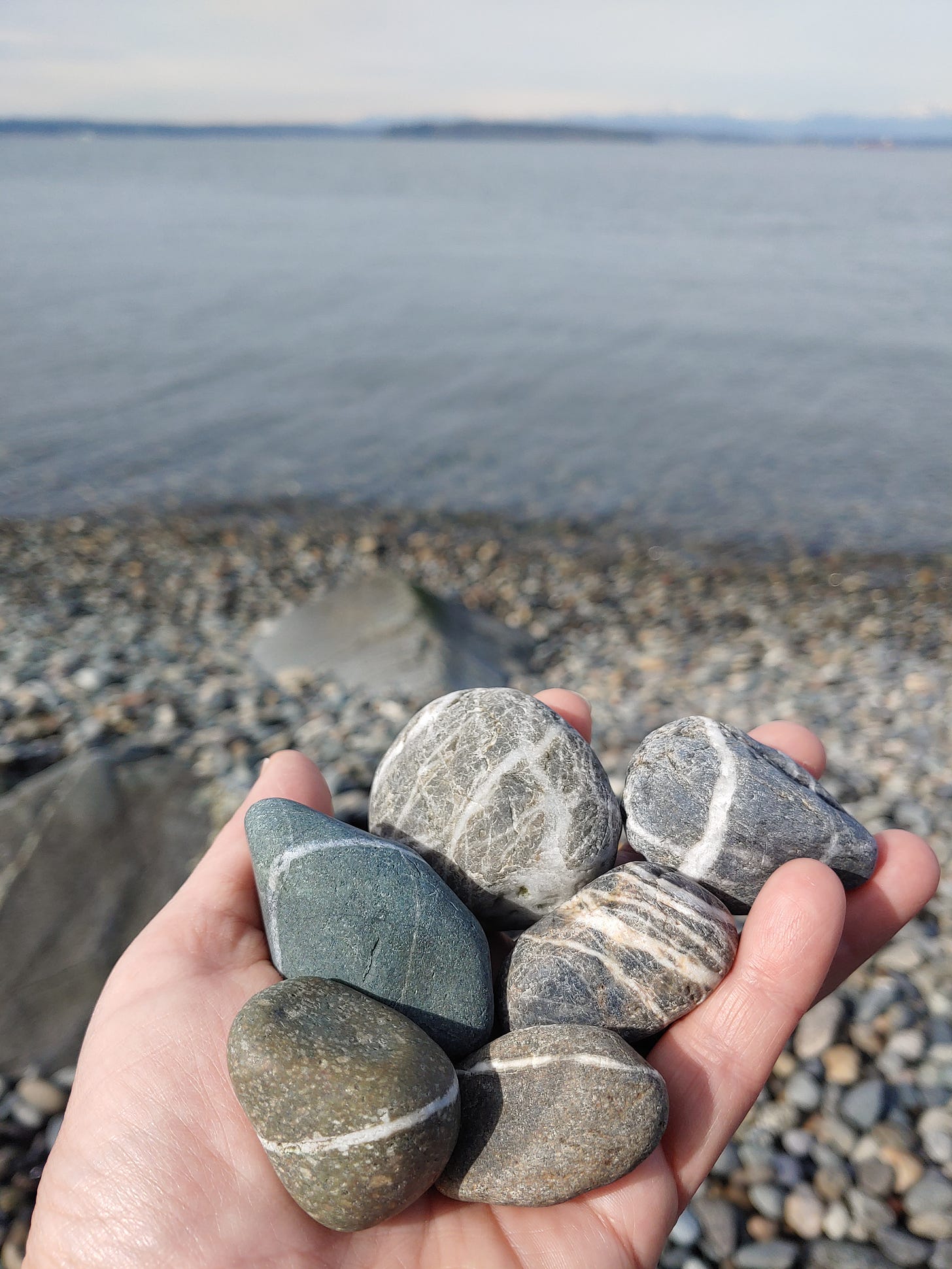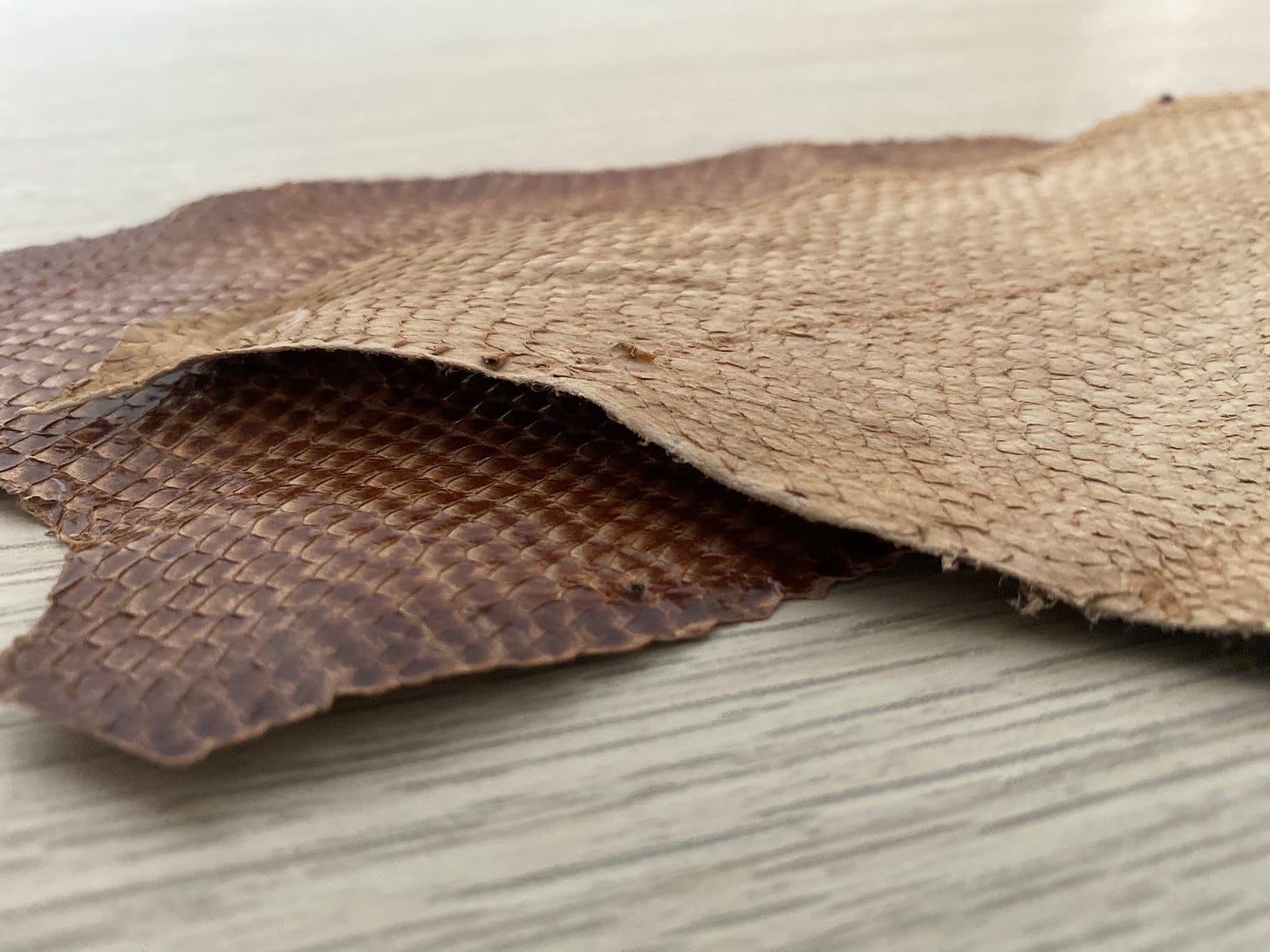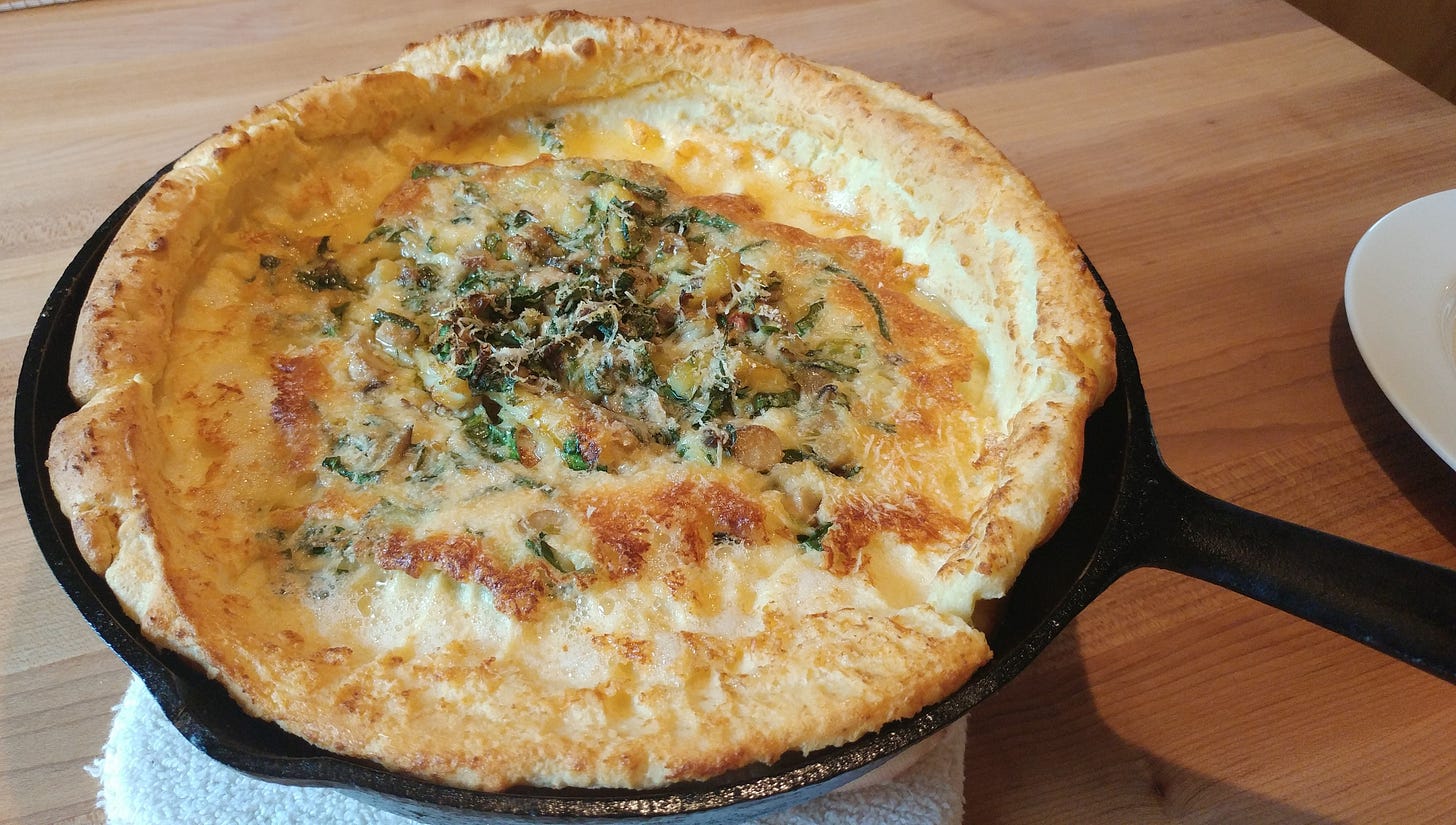Only eight issues in and I’m already wondering about the intent to have a high-level theme of some sort for each newsletter. We’ll see how that evolves over time. For now, as it’s the start of 2023, I will go with a traditional welcome of the New Year. May it be one filled with plenty of delicious seafood, along with love, adventure, comfort, fun, and good health for us all.
So what does this year have in store (at least in the context of this newsletter)? A great many things, apparently. I’ve got a simple spreadsheet with the full year’s worth of newsletter issues represented, imagining which few of the dozen sections that I outlined in this “Welcome” issue to include in each, with plenty of specific topics for those slots. It confirms one major impetus for starting this: a backlog of content and ideas collected in recent years, and knowing I’d continue to feed inspiration through playing around in the kitchen, travel, conversations, meals with friends, reading, podcasts, and other such engaging activities.
Some days I’m torn about my focus here. I could put out a decent product that sticks to practical things home cooks need to know to have good experiences with seafood. A sort of serialized guide to buying and cooking seafood. That would make for a more streamlined editorial calendar, no doubt. And I’d have a more well-defined audience—a writer’s job is easier with a clear image of who it is they’re writing for.
But another key reason I sat down to start this was to broaden my own knowledge, extend my seafood conversations beyond the kitchen. After being quite focused on the home cook in a kitchen setting for so much of my writing career, I was recently jostled into a new perspective for my work. Questions that came up while working on my latest cookbook have gotten under my skin. From where my readers would be shopping for their seafood and what options they’d have when they got there (more on that below) to what resources (organizations, guides, apps, etc.) do the best job of helping clarify complex topics such as sustainability and traceability. And that whole world on the other side of the retail counter, there’s so much I don’t know about the processes and practices that determine what’s at the counter and how it’s managed once it gets there.
Ultimately my prime goal still is to help consumers have the best experiences buying and cooking seafood that they can. I feel strongly that when we know even a tiny bit more about the seafood we buy it adds more value to the experience we have with it, not to mention helping us make more informed decisions. Also I want to bridge a bit of the gap between the industry and the consumer, sharing perspectives, issues, and cool developments (an example below) from the larger world of seafood.
Back to what’s in store for this year…. Sharing conversations with interesting people from many facets of the industry. Getting to know more about seaweed (I’m way behind). Travel will be a regular thread: mine, others, new trips, older trips, vicarious trips. Delving into ‘blue foods’ and the greater ‘blue economy.’ Discussions around sustainability, supporting a healthy ecosystem as well as supporting individuals and communities associated with harvest and production. Definitely the core staples of species information, techniques, kitchen tips. One thing that will be constant in each issue is a recipe, be it a complete and detailed version, or casual description of an off-the-cuff preparation.
Thanks for being here. You get a gold star for reading this far into my musings about what I have in mind for Seafood Savvy. I hope you’ll enjoy wherever this ends up going. At the very least I’m certain to learn a lot along the way.

At the Market: Where do you shop for seafood?
In this case, that’s a rhetorical question—one I began wondering about when I started writing Shellfish a few years ago. (Though it’s an actual question on the survey linked below, happy to hear how you’d respond there.) As I was developing recipes and writing text for the range of shellfish covered in the book, I was curious what options readers would have for the bulk crab meat, live clams, scallops, and other shellfish included in the recipes.
I did a healthy amount of Googling around to see what I could find for various seafood shopping options around the U.S., including national and regional chains and specialty seafood markets. The online window-shopping through different stores’ offerings provided some helpful insights. But I really wanted to hear from the shoppers themselves.
Lacking an unlimited travel budget to fly around the country and ask folks directly, the next best option was a survey (it was also early days of pandemic, so wasn’t going anywhere anyway). Of the dozen or so questions that respondents answered, I was particularly interested in finding out the names of store(s) where they shop for seafood. Responses have proven very interesting on a number of levels. Including an intriguing variety of seafood sources folks listed, from QVC.com (which I’d not have imagined being in the seafood-selling business) to “I catch it myself.”
The “catch it myself” response nods to one caveat with my survey’s results: a good portion of the respondents are from among my extended circle of friends and colleagues. Many are in or adjacent to my part of the world (the Pacific Northwest) and/or my line of business (accomplished cooks, already comfortable with seafood). I have no hard deadline for gathering input, the survey’s still up and I hope in the coming months to collect more input. I am quite happy that 23 states are represented by respondents, plus a few from Canada. There definitely is some breadth to what I’ve received.
It was interesting to see an item last week about a different recent survey (much larger, and seemingly more focused on the eastern half of the country) that included a list of the top ten “most trusted seafood retailers in the United States.” Of those ten, five are among the 100+ stores folks have mentioned on my survey, including Publix, Wegmans, ShopRite, and The Fresh Market. There is one overlap between my top ten and theirs: Whole Foods.
For my survey, among top vote-getters are stores that reflect this northwest corner of the country: Metropolitan Markets, PCC, Mutual Fish, and Town & Country. Costco, too, a popular source. It was great to see that many folks have a few or more favorite stores for different needs and occasions.
I have definitely gained good insights about where people shop (plus lots of feedback about the highs and lows of seafood shopping, frustrations they have at times). Next up for me is research to do and conversations to have—my initial focus on what it is about the resources we trust and appreciate most that makes them stand out from the seafood-retail crowd. In future issues I’ll be profiling specific stores that have particularly interesting offerings, history, and/or stories.
Industry Insights: Fish Leather
In the shifting-of-gears mentioned above—broadening my attention to seafood topics beyond cooking—I’ve been turning to organizations, newsletters, podcasts, etc. that focus on various aspects of the seafood industry. Among those I came across early on is Seafood and Gender Equality, a perfect example of what I have to gain on this new path. It hadn’t occurred to me to consider gender equality as among issues facing the seafood industry. Founder Julie Kuchepatov does such an admirable job creating positive and impactful discussions with and about women in the seafood industry, and inviting the industry as a whole to join in uplifting women working in seafood.
SAGE’s podcast The Conch, now in its third season, has been a favorite resource for me, an outstanding introduction to inspiring women engaged in this dynamic industry. I was particularly intrigued by a recent episode with Tasha Nathanson who founded 7 Leagues, a fish leather tannery. It was fascinating to hear about some of her journey, which includes a summer internship at a leather tannery and an intensive shoe-making course. There’s a picture on the web site of the pair of boots she made, a solid proof-of-concept after Tasha wore them through a blustery and wet winter and spring in Vancouver, BC.
I’d been just generally familiar with the idea of leather being made from fish skins, so appreciated the interesting detail about the process discussed in that interview, particularly Tasha’s commitment to operate as sustainably as possible, both ecologically and socially. This includes using a by-product of the lumber industry for the tannins needed in producing the fish leather, the skins for which already a by-product of fish processing. It was also wild to learn that, per thickness, fish leather is stronger than other leathers.
It’s going to be fun to follow the 7 Leagues journey as a tannery making products that help ensure as little as possible from fish goes to waste. And before long we may be hearing about the next hot thing to come out of the Northwest: fish leather boots!

Out and About: Upcoming Class
I’ll be teaching my first class with Milk Street Cooking School on February 22, online. The two recipes from Shellfish featured in that class are Steamed Clams with a Frenzy of Herbs and Cornmeal-Fried Oysters with Pickled-Pepper Tartar Sauce. You can find out more about the class and register here. Use the promo code SHELLFISH for 15% off the ticket cost if you do register.


Recipe: Dungeness Crab Dutch Baby
I still have the issue of Sunset magazine from January 1977 that features a glorious Dutch Baby on the cover. I don’t know if that was my mom’s first introduction to the oversized puffy pancake, but I do know she made it quite often for many years. It’s hard not to love the delicious, showy character of such a simple preparation. I was long enamored with enjoying the puffy wonder with a squeeze of lemon juice and light sprinkle of powdered sugar. But boy, I’m now realizing how long it’s been since I’ve had that classic version. In my Stone Fruit cookbook I included a version with gingered apricots as accompaniment.

For some books I’ve had fun playing around with savory variations of traditionally sweet recipes. In Salty Snacks I put together a few savory renditions of popular cookies, including a peanut butter cookie with dukka spice and thumbprint cookies using a Parmesan dough and tomato-tart cherry jam for the filling. When it came to working on Crab, an echo of all those Dutch Babies past inspired a savory version. It’s as well suited to a breakfast or brunch menu as it is to being an appetizer or light meal, with salad alongside.
There is something magic about the cast iron pan in this recipe, though my mom above clearly shows that other baking dishes work too. Dense, heavy cast iron holds heat with determination and helps ensure a striking and brown puffy edge. I’ve tried it in a standard stainless steel skillet and while the results were delicious, they weren’t as dramatic and puffed-crisp around the edges as you’d get from the cast iron pan.
Makes 6 to 8 servings
6 ounces crabmeat
7 tablespoons unsalted butter, divided
4 large mushrooms (about 6 ounces), wiped clean, trimmed, and diced
1/4 cup finely chopped green onion
1/2 cup moderately packed slivered fresh spinach leaves
1/2 teaspoons kosher salt, plus more for seasoning
Freshly ground black pepper
4 large eggs
1 cup whole milk
1 cup all-purpose flour
2 tablespoons freshly grated Parmesan cheese
Preheat the oven to 425 degrees F.
Pick over the crabmeat to remove any bits of shell or cartilage. If using king or snow crab leg meat, cut it into medium dice. If any of the other meat pieces are quite large, break them into a few smaller pieces. Squeeze the crab gently to remove excess liquid.
Melt 1 tablespoon of the butter in a medium skillet over medium heat. Add the mushrooms and green onion and cook, stirring occasionally, until tender and any liquid given off by the mushrooms has evaporated, 3 to 4 minutes. Transfer the vegetables to a medium bowl and stir in the crab, then stir in the spinach with a good pinch each of salt and pepper (the spinach will wilt slightly, which is the plan).
Put the remaining 6 tablespoons of butter (in one single piece, not cut up) in a 10- to 11-inch cast iron skillet and put the skillet in the oven to preheat while making the batter.
Blend the eggs in a blender on high speed for 30 seconds. Add the milk, flour, and 1/2 teaspoons salt, then blend for 30 to 60 seconds longer until very smooth and evenly blended.
When the butter is fully melted, take the skillet from the oven and gently pour the batter into the center. Scatter the crab mixture over most of the center, leaving the outer 1-inch perimeter of the batter free of crab. Sprinkle the Parmesan over the crab, then return the skillet to the oven and bake until well puffed and nicely browned, 20 to 25 minutes.
Set the skillet on a trivet in the center of the table and cut into wedges to serve. Or, simply cut and serve in the kitchen.






A wonderful read. The links provided to broaden our experience with seafood I find fascinating. So much more explore. I appreciate the photo of the wishing rocks.
Happy New Year to you, Cynthia! Love the photo of the rocks.